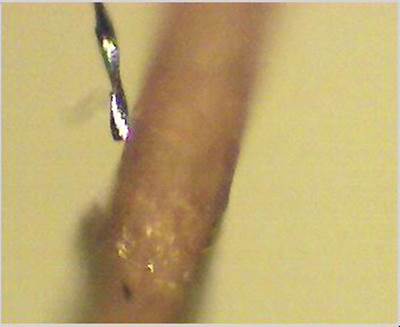Milling Tools
What Is The Best Way To Machine A Deep, Narrow Pocket In Titanium?
Boeing’s answer to a reader question emphasizes the use of high-feed milling tools.
Read MoreAluminum-Hogging End Mills Reduce Part Costs
Kennametal’s MaxiMet end mills are designed for aerospace and general engineering shops seeking to improve performance in machining high volumes of aluminum. According to the company, the cutters are suitable for applications that require both high metal removal rates and quality wall and floor finishes. The cutters feature a flute design that is said to enable high feed rates by providing rigidity behind the cutting edges.
Read MoreEnd Mills Feature High Performance, Long Tool Life
Designed to replace multiple tools used for roughing, semi-finishing, slotting and profiling, Hanita’s VariMill II family of solid-carbide end mills is suited for high-temperature alloys, nickel- and carbon-based alloys and titanium. Available from Kennametal, the tools feature five unequally spaced flutes, a patented flute form and end geometry and AlTiN coating that enables heavy cuts and long tool life, the company says. The end mill geometries are designed to virtually eliminate chatter and harmonics to allow slotting at cutting depths of 1 × D and perform side-milling operations at redial and axial cutting depths ranging to 0.
Read MoreOne Insert Design Machines A Variety Of Materials
Kennametal’s Mill 1-10 tooling platform performs common machining applications such as face milling, shoulder milling, pocketing, slotting, interpolating and ramping for steels, aluminum and exotics, all with one common insert style. The tooling platform accomplishes this through the use of multifunctional cutter bodies and First Choice inserts, which consist of different grades and edge preps for various work materials but utilize the same cutting geometry and size. Cutter bodies come in straight and helical flute styles.
Read MoreHelical Cutters Increase Milling Versatility, Performance
Mill 1-14 helical cutters from Kennametal are designed for greater axial depth of cut than a standard end mill, the company says. The flexible cutter range features inserts stacked two, three and four high. The helical cutters can be used for medium to heavy roughing and semi-finishing in applications such as contour profiling, slotting, ramping, helical ramping from solid and plunge milling.
Read MoreHigh-Performance Milling
Excelerator Mills are designed for high-performance milling in difficult-to-machine materials using the company’s ceramic inserts. Typical application areas include most hardened materials above 40 Rc and nickel- and cobalt-based super alloys. Ring Max ring-groove cutters are engineered to cut machining time of API ring grooves, the company says.
Read MoreApplication-Specific Conical Ball-Nose End Mills
These conical ball nose end mills are designed for machining specific components in several key manufacturing segments, including automotive, aerospace, energy and HVAC.
Read MoreHow Scalable is Machining?
Tiny tools don’t behave like big tools do. One researcher explains why.
Read MoreSpecialty End Mills
Scientific Cutting Tools’ corner-rounding end mills feature three flutes and are double ended to provide maximum value. The cutter diameter and the cut depth are held to ±0. 001" tolerance to provide ease of setup.
Read MoreHow Do You Maximize Tool Life In Aluminum?
Boeing experts say climb vs. conventional is not the key. They recently answered a question submitted through our Aerospace Machining Zone, saying the key to tool life is actually chatter control.
Read More







.png;maxWidth=300;quality=90)






